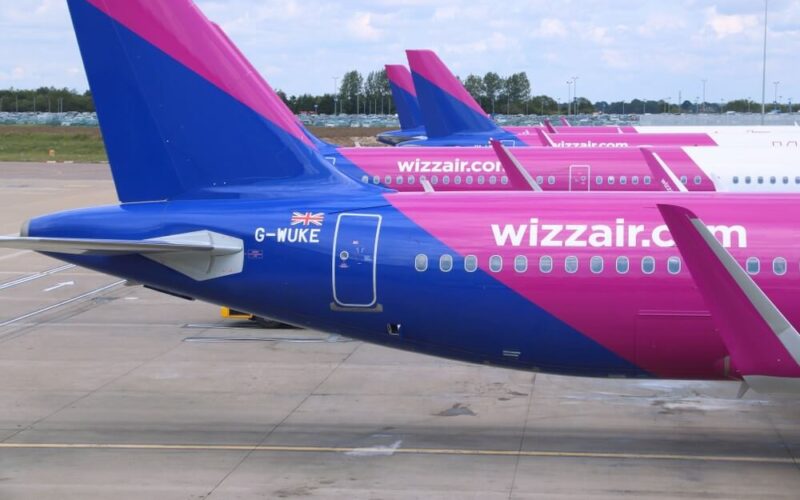Hungarian low-cost-carrier Wizz Air reported a net loss reaching around $458.4 million (€450 million) for the first quarter of the fiscal year 2023 owing to “a challenging macro and operational backdrop”.
In its latest trade update released on July 11, 2022, Wizz Air wrote that during the first quarter of 2022, which ended on June 30, the airline recorded a load factor of 85%, which decreased by 9% when compared to the same period previous fiscal year. The carrier estimated that due to higher operating costs, which are related to capacity reallocation stemming from Russia’s invasion of Ukraine, it also experienced an operating loss of $287.8 million (€285 million).
“Cumulatively, the unrealized FX [foreign exchange, ed. note] losses, the cost of disruptions and the lower utilization in the quarter, combined with the pricing environment especially in April and May 2022 drove an operating loss of 285m EUR for the quarter and a net reported loss of around 450m EUR (also including the unrealized FX losses),” Wizz Air statement reads.
Another hurdle that the low-cost carrier had to overcome was the strength of the dollar, which has been nearing the value of the euro.
“The strength of the USD at the end of the quarter (1.04 vs. EUR) compared to the start of the quarter (1.11 vs. EUR) drove an unrealized FX loss on the Company of 136 million EUR,” the carrier said in the update.
“The impact is driven by a revaluation of the USD lease liabilities on the balance sheet of the Company. This impact will reverse should the EUR regain strength relative to the USD during the next months and quarters, nevertheless, the spot rate saw a further strengthening of the USD versus the EUR (1.02 vs EUR),” the airline added.
However, despite the losses, Wizz Air provided a positive outlook for July and September 2022. The airline said it expects “a material operational profit” as it looks forward to revenue growth. The carrier said that as of July its load factors have already improved above 90%.
“To be able to avoid cancellations and secure a more punctual operation to our customers, we have further improved the agility and resilience of our network including adjusting schedules where we have seen a higher occurrence of issues, such as slot allocation issues, turn-around timings,” the carrier said.

